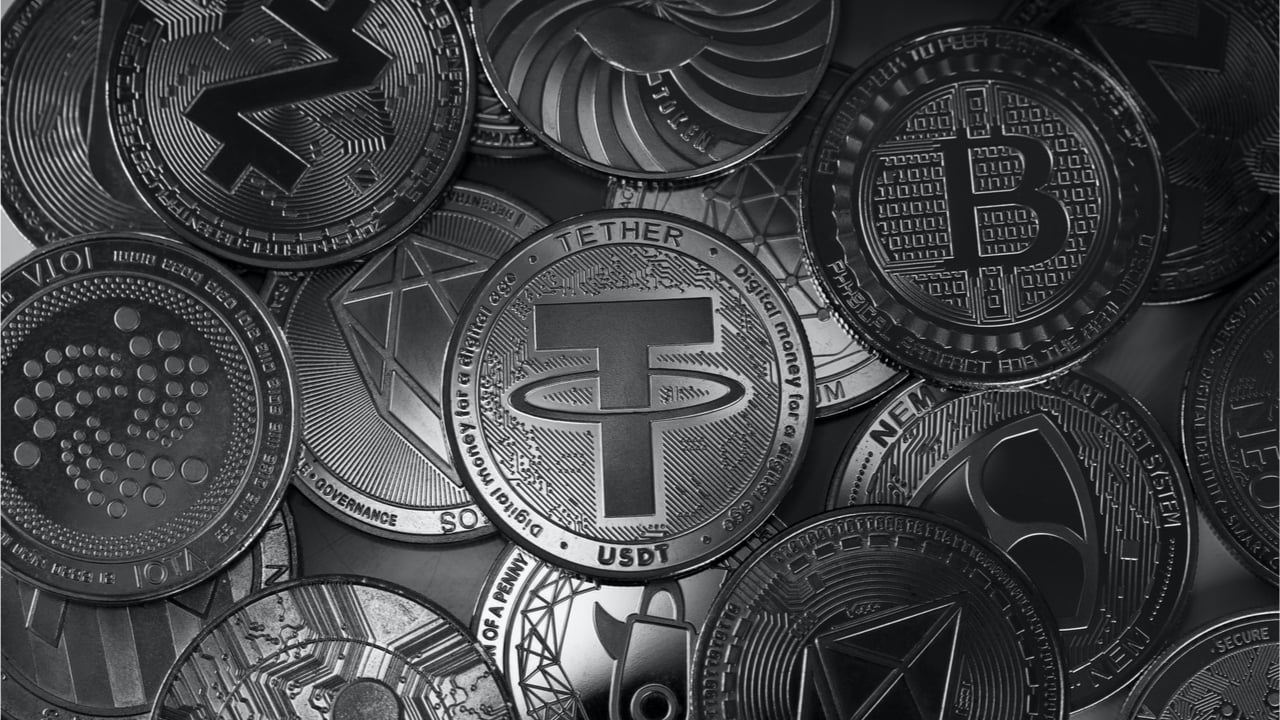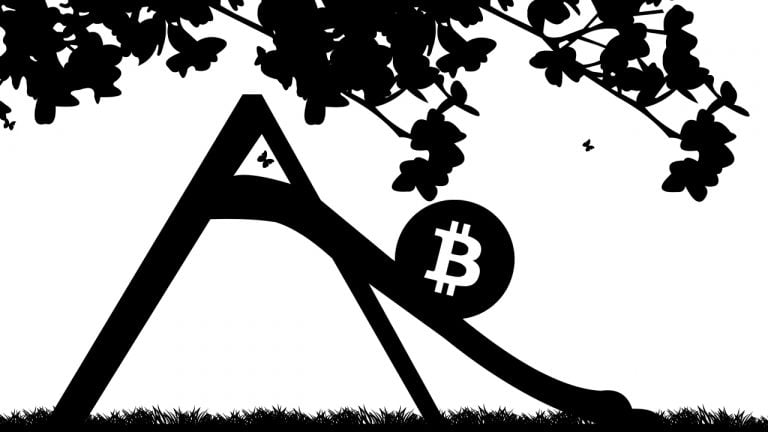
According to Bybit data, the growth trend of CEXs has failed to overtake the growth rate of decentralized exchanges (DEX), as major DEX Uniswap v3 increased volumes by 320%.
A new report says trading volumes on global centralized cryptocurrency exchanges (CEX) like Binance have spiked significantly since late last year.
According to data from the Bybit Institutional Report 2024, many CEXs at least tripled their monthly trading volumes from October 2023 to March 2024.
Released on April 18, Bybit’s report indicates that OKX 30-day volumes have surged as much as 278% since last October, while Binance followed with a 239% increase. Bybit exchange also stood out as one of the fastest-growing platforms in terms of volumes, adding 264%.

Bitcoin trading volumes at a five-year low and the S&P 500 reaching its lowest levels in over three months could spell trouble for BTC bulls.
The upcoming $3 billion in Bitcoin (BTC) monthly options expiration on Sept. 29 could prove pivotal for the $26,000 support level.
On one side, Bitcoin’s recognition in China appears to be strengthening, following a judicial report from a Shanghai Court that acknowledged digital currencies as unique and non-replicable.
Conversely, Bitcoin’s spot exchange trading volumes have dwindled to a five-year low, according to on-chain analytics firm CryptoQuant. Analyst Cauê Oliveira pointed out that a significant factor behind this decline in trading activity is the growing fear surrounding the macroeconomic outlook.

Despite the increase in long-term holders, the reduced trading volume poses a risk in terms of unexpected volatility. This means that price swings resulting from liquidations in derivative contracts could potentially cause structural market damage if there aren’t enough active participants.
Furthermore, there is growing unease among traditional financial institutions when it comes to handling crypto-related payments.
JPMorgan Chase, the largest bank in North America, is reportedly prohibiting transfers “related to crypto assets” within its retail division, Chase. The stated rationale is to protect against potential involvement in fraudulent or scam activities.
Lastly, Bitcoin holders are feeling apprehensive as the Dollar Strength Index (DXY), a measure of the dollar’s strength against other currencies, reached 106 on Sept. 26, its highest level in 10 months.
Historically, this index exhibits an inverse correlation with risk-on assets, tending to rise when investors seek safety in cash positions.
The open interest for the Sep. 29 options expiration currently stands at $3 billion. However, it is expected that the final amount will be lower due to bullish expectations of Bitcoin’s price reaching $27,000 or higher.
The unsuccessful attempt to break above $27,200 on Sept. 19 may have contributed to overconfidence among Bitcoin investors.

The 0.58 put-to-call ratio reflects the imbalance between the $1.9 billion in call (buy) open interest and the $1.1 billion in put (sell) options.
However, if Bitcoin’s price remains near $26,300 at 8:00 am UTC on Aug. 25, only $120 million worth of the call (buy) options will be available. This difference happens because the right to buy Bitcoin at $27,000 or $28,000 is useless if BTC’s price is below this level on expiry.
Below are the four likeliest scenarios based on the current price action. The number of options contracts available on Sept. 29 for call (buy) and put (sell) instruments varies depending on the expiry price. The imbalance favoring each side constitutes the theoretical profit.
This crude estimate disregards more complex investment strategies. For instance, a trader could have sold a call option, effectively gaining negative exposure to Bitcoin above a specific price. Unfortunately, there’s no easy way to estimate this effect.
It’s worth noting that for the bulls to level the playing field ahead of the monthly expiration, they need to achieve a 3.2% price increase from $26,200. In contrast, the bears only need a modest 1% correction below $26,000 to gain a $430-million advantage on Sept. 29.
Related: Crypto bills could be delayed as many prepare for US gov’t shutdown
Given that Bitcoin traded below the $26,000 support level between Sept. 1 and Sept. 11, it wouldn’t be surprising if this level were breached again as the options expiration approaches. Moreover, investor sentiment is becoming increasingly risk-averse, as evidenced by the S&P 500 dropping to its lowest level since June.
Consequently, unless there is significant news or an event that strongly favors Bitcoin bulls, the likelihood of BTC’s price breaking below $26,000 by Sept. 29 remains high.
This article is for general information purposes and is not intended to be and should not be taken as legal or investment advice. The views, thoughts, and opinions expressed here are the author’s alone and do not necessarily reflect or represent the views and opinions of Cointelegraph.
 According to statistics, decentralized exchange (dex) monthly trading volumes have dropped significantly since Jan. 2022. After a brief spike in volume in Nov. 2022, dex trade volumes have been lackluster for the past 44 days. As of Jan. 14, 2023, Uniswap version three (V3) has the highest trade volume during the past 24 hours at […]
According to statistics, decentralized exchange (dex) monthly trading volumes have dropped significantly since Jan. 2022. After a brief spike in volume in Nov. 2022, dex trade volumes have been lackluster for the past 44 days. As of Jan. 14, 2023, Uniswap version three (V3) has the highest trade volume during the past 24 hours at […] After non-fungible token (NFT) sales soared during the month of August, the first week of September’s NFT sales has been awful. Statistics show the number of sales in mid-August tapped a high of 193,693 sales but plummeted 86% to 27,053 sales on September 10. Metrics from the most used marketplaces show that volume has slid […]
After non-fungible token (NFT) sales soared during the month of August, the first week of September’s NFT sales has been awful. Statistics show the number of sales in mid-August tapped a high of 193,693 sales but plummeted 86% to 27,053 sales on September 10. Metrics from the most used marketplaces show that volume has slid […] While bitcoin prices have risen in value during the last two weeks, bitcoin dominance levels have slipped to lows not seen since the June 6 low of 41%, and the dip to 39.97% on May 16, 2021. Depending on the crypto market price aggregator leveraged, bitcoin’s dominance has been between 39.99% to 41.52%. Meanwhile, as […]
While bitcoin prices have risen in value during the last two weeks, bitcoin dominance levels have slipped to lows not seen since the June 6 low of 41%, and the dip to 39.97% on May 16, 2021. Depending on the crypto market price aggregator leveraged, bitcoin’s dominance has been between 39.99% to 41.52%. Meanwhile, as […] Over the last seven days, decentralized exchange (dex) trade volume has tapped $17 billion across the 21 Ethereum dex platforms. Pancakeswap has seen between $400K to $860K every 24 hours during the last week as well. Meanwhile, dex aggregators are eating away at dex trade volumes, becoming more popular by the day. Uniswap Commands Top […]
Over the last seven days, decentralized exchange (dex) trade volume has tapped $17 billion across the 21 Ethereum dex platforms. Pancakeswap has seen between $400K to $860K every 24 hours during the last week as well. Meanwhile, dex aggregators are eating away at dex trade volumes, becoming more popular by the day. Uniswap Commands Top […]
Bitcoin’s hashrate recovery, steady peer-to-peer markets and the steady volume exhibited by Asia-based exchanges suggest that China’s attempt to ban BTC was ineffective.
Bitcoin (BTC) might have suffered its largest coordinated attack over the last couple of months, but in this instance, the investor community did not capitulate. China outright banning mining in most regions after giving BTC miners a two-week notice and this caused the single largest mining difficulty adjustment after the network hash rate dropped 50%.
The market sentiment surrounding Bitcoin was already damaged after Elon Musk announced that Tesla would no longer accept Bitcoin payments due to the environmental impact of the mining process. It remains unknown whether China’s decision was influenced or related to Musk’s remarks, but undoubtedly those events held a negative effect.
A couple of weeks later, on June 16, China blocked cryptocurrency exchanges from web search results. Meanwhile, derivatives exchange Huobi started to restrict leverage trading and blocked new users from China.
Finally, on June 21, the People’s Bank of China (PBoC) instructed banks to shut down the bank accounts of over-the-counter desks and even their social networks accounts were banned. OTC desk essentially act as a fiat gateway in the region so without them it would be difficult to exchange from Bitcoin to stablecoins.
As these events unfolded, some analysts were reluctant to describe the tactics as nothing other than meaningless FUD, but in hindsight, it appears that China launched a very well-planned and executed attack on the Bitcoin network and mining industry.
The short-term impact could be considered a moderate success due to the collapse in Bitcoin price and the rising concerns that a 51% hashrate attack could occur.
Regarding Bitcoin Mining and China, I would not believe anything you hear. I would not rule out the possibility that the Chinese Communist Party is trying to orchestrate a 51% attack on the Bitcoin network. Stay vigilant.
— Danny Diekroeger (@dannydiekroeger) June 25, 2021
Despite the maneuvers, China's attack ultimately failed and here are the main reasons why.
After peaking at 186 million TH/s on May 12, the Bitcoin network hash rate, an estimate of the total mining power, started to plunge. The first couple of weeks were due to restrictions to coal-powered areas, estimated at 25% of the mining capacity.
However, as the ban extended to other regions, the indicator bottomed at 85 million TH/s, its lowest level in two years.

As the data above indicates, the Bitcoin network's processing power recovered to 100 million TH/s in less than three weeks. Some miners had successfully moved their equipment to Kazakhstan, while others shifted to Canada and the U.S.
Even though the companies involved in crypto transactions have been banned from the country, individuals continued to act as intermediaries—some of these recorded over 10,000 successful peer-to-peer transactions according to data from the exchange’s own ranking system.

Both Huobi and Binance offer a similar marketplace where users can trade multiple cryptocurrencies including USD Tether (USDT). After converting their fiat to stablecoin, transacting on a regular or derivatives exchange becomes possible.
A complete crackdown on trading from Chinese entities would likely be reflected in the exchanges previously based on the region, like Binance, OKEx, and Huobi. However, looking at the recent volume data, there hadn’t been a meaningful impact.

Take notice of how the three 'Asia-based' exchanges remain dominant, while Coinbase, Kraken, and Bitfinex are nowhere near their trading activities.
China's ban on Bitcoin mining and transactions may have led to some temporary hiccups and a negative impact on BTC price, but the network and price have recovered in a way that is better than many expected.
Currently, there is no way to measure the OTC transactions where larger blocks are traded but it is just a matter of time until these intermediaries find new gateways and payment routes.
The views and opinions expressed here are solely those of the author and do not necessarily reflect the views of Cointelegraph. Every investment and trading move involves risk. You should conduct your own research when making a decision.
 The price of bitcoin has slid under the $30K zone on Tuesday, dipping to $29,300 per unit during the early morning trading sessions (EDT). The global cryptocurrency market capitalization of all the crypto coins in existence is $1.19 trillion as it decreased by more than 6% in the last day. Bitcoin’s Market Cap Sees $19 […]
The price of bitcoin has slid under the $30K zone on Tuesday, dipping to $29,300 per unit during the early morning trading sessions (EDT). The global cryptocurrency market capitalization of all the crypto coins in existence is $1.19 trillion as it decreased by more than 6% in the last day. Bitcoin’s Market Cap Sees $19 […] Digital currency markets have slid in value over the last 12 hours as the entire crypto-economy has lost over 7% during the last 24 hours. Bitcoin attempted to cross the $40k handle but was stopped at $39,490. Since then, bitcoin has dipped 7.3% during the early morning (EST) trading sessions on Friday. Bitcoin $40K Attempt […]
Digital currency markets have slid in value over the last 12 hours as the entire crypto-economy has lost over 7% during the last 24 hours. Bitcoin attempted to cross the $40k handle but was stopped at $39,490. Since then, bitcoin has dipped 7.3% during the early morning (EST) trading sessions on Friday. Bitcoin $40K Attempt […] Decentralized finance (defi) exchanges and tokens are recovering a lot faster than a great number of digital assets that lost more than 40% in value last week. Defi tokens like curve, kyber network, terra, hxro, and more have been seeing double-digit gains. On May 23, the defi economy’s aggregate total-value locked (TVL) dropped to a […]
Decentralized finance (defi) exchanges and tokens are recovering a lot faster than a great number of digital assets that lost more than 40% in value last week. Defi tokens like curve, kyber network, terra, hxro, and more have been seeing double-digit gains. On May 23, the defi economy’s aggregate total-value locked (TVL) dropped to a […]